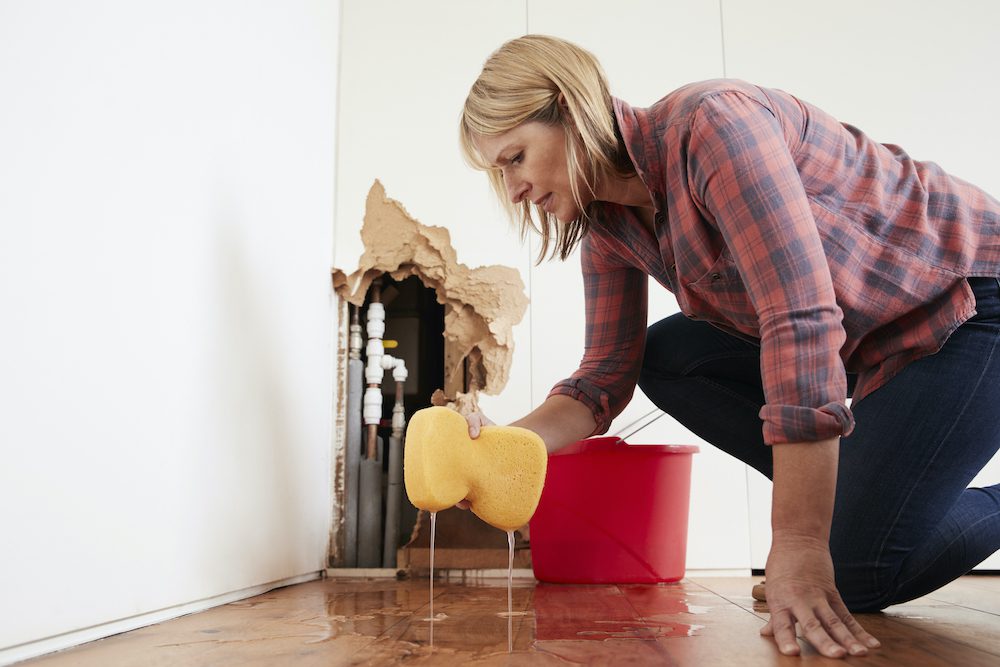6 Ways to Locate Hidden Water Leakages in Your Residence
6 Ways to Locate Hidden Water Leakages in Your Residence
Blog Article
Just about everyone has got their personal way of thinking when it comes to Detecting hidden plumbing leaks.

Early discovery of leaking water lines can reduce a potential calamity. Some small water leaks may not be noticeable.
1. Take A Look At the Water Meter
Examining it is a surefire means that helps you find leakages. If it moves, that shows a fast-moving leak. This suggests you may have a sluggish leakage that could also be below ground.
2. Check Water Intake
Assess your water expenses and also track your water usage. As the one paying it, you need to discover if there are any type of discrepancies. If you identify sudden changes, regardless of your consumption being the same, it suggests that you have leaks in your plumbing system. Keep in mind, your water expense should fall under the exact same array monthly. An unexpected spike in your costs indicates a fast-moving leak.
A consistent rise every month, even with the same behaviors, shows you have a sluggish leak that's additionally gradually rising. Call a plumber to completely check your residential property, specifically if you feel a warm location on your floor with piping below.
3. Do a Food Coloring Examination
30% comes from bathrooms when it comes to water usage. Test to see if they are running appropriately. Decrease specks of food color in the storage tank and wait 10 mins. If the color in some way infiltrates your bowl during that time without flushing, there's a leak in between the tank and also bowl.
4. Asses Outside Lines
Don't neglect to inspect your outdoor water lines too. Ought to water leak out of the link, you have a loosened rubber gasket. One little leakage can throw away lots of water as well as spike your water costs.
5. Assess the situation as well as examine
Property owners need to make it a routine to inspect under the sink counters as well as even inside cupboards for any bad odor or mold and mildew growth. These two warnings suggest a leak so prompt attention is needed. Doing routine inspections, also bi-annually, can conserve you from a significant problem.
If you know your house is already old, keep a careful eye on your heating systems, tubes, pipelines etc. Check for discolorations as well as compromising as most pipes as well as appliances have a life span. They will certainly additionally normally deteriorate because of damage. If you suspect leaking water lines in your plumbing system, do not await it to rise. Call an expert plumber right now so you don't wind up with an awful mess in your house.
Early detection of leaking water lines can mitigate a prospective disaster. Some small water leakages might not be noticeable. Inspecting it is a surefire means that helps you discover leaks. One little leak can squander heaps of water and spike your water costs.
If you suspect dripping water lines in your plumbing system, do not wait for it to rise.
WARNING SIGNS OF WATER LEAKAGE BEHIND THE WALL
PERSISTENT MUSTY ODORS
As water slowly drips from a leaky pipe inside the wall, flooring and sheetrock stay damp and develop an odor similar to wet cardboard. It generates a musty smell that can help you find hidden leaks.
MOLD IN UNUSUAL AREAS
Mold usually grows in wet areas like kitchens, baths and laundry rooms. If you spot the stuff on walls or baseboards in other rooms of the house, it’s a good indicator of undetected water leaks.
STAINS THAT GROW
When mold thrives around a leaky pipe, it sometimes takes hold on the inside surface of the affected wall. A growing stain on otherwise clean sheetrock is often your sign of a hidden plumbing problem.
PEELING OR BUBBLING WALLPAPER / PAINT
This clue is easy to miss in rooms that don’t get much use. When you see wallpaper separating along seams or paint bubbling or flaking off the wall, blame sheetrock that stays wet because of an undetected leak.
BUCKLED CEILINGS AND STAINED FLOORS
If ceilings or floors in bathrooms, kitchens or laundry areas develop structural problems, don’t rule out constant damp inside the walls. Wet sheetrock can affect adjacent framing, flooring and ceilings.
https://www.servicemasterbyzaba.com/blog/how-to-detect-water-leakage-in-walls/

As a serious reader on Detecting hidden plumbing leaks, I figured sharing that chunk was necessary. Sharing is good. Who knows, you may be helping someone out. Thank you for taking the time to read it.
Report this page